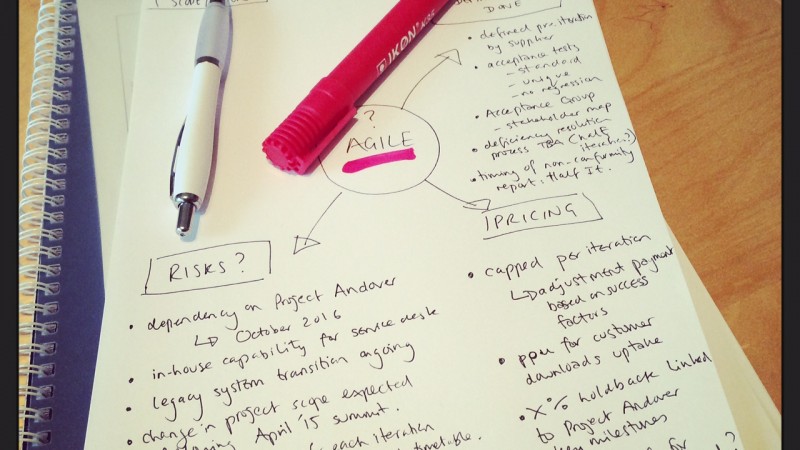Agile contracting
Posted by admin / October 23rd, 2014 / No responsesWe’re speaking to a new client at the moment about agile contracting. By which I mean – they have agile technology on their strategic agenda, and they need focussed commercial advice to better understand and drive the contracting model to support it.
It’s really great to be having this conversation with a client at an early stage in the technology scoping and design process.
Too often we get contacted by a client which is “ready to contract”. This usually means that discussions with a chosen technology provider are already well advanced and they just want us to “put it all down on paper”. Let me tell you, it is very difficult to unpick the plethora of verbal and written agreements which have been made by that stage, and almost impossible to influence the commercial principles which have been established.
In one (admittedly extreme) example, we agreed to come and “put it down on paper” and whilst pulling together Heads of Terms we uncovered a serious data protection issue which meant that the deal could not progress at all. This resulted in almost a year’s worth of sales and design and negotiation between those contracting parties being wasted – and back to the drawing board.
Contracting is almost always a complicated process, but it becomes even more so in the fast-changing world of technology and software development. The early you can get your commercial advisors involved then the easier the process of procurement and contracting will be.
In the arena of agile contracting, the most important factor will be the levels of trust and collaboration between the parties – and specifically how a contract model will be used to manage or build a sensible framework to deal with problems or issues which arise. This means setting clear expectations from the beginning as to the expectations of the parties and if there are commercial or legal challenges to be overcome then these are shared early in discussions and worked through together. The mindset for negotiation will be that a “win-win” approach, resulting in a mutually optimal arrangement for all parties, will be the one that reaps most benefits.
Some common areas to look at early in order to inform a draft contracting model will be:
– target-cost models : to move the traditional concept of incentives and penalties towards share of pain/gain you need to understand what is important to the client in delivery terms and what financial constraints or timelines may be driving the end solution;
– deliverables : understanding the “Definition of Done” in relation to the specific product and how this might evolve over the term of the contract (this is very different concept from traditional fixed price, fixed scope!);
– potential risks: probing the intended operating model between the parties, and how risks can be mitigated by relationship hooks and the links into agile development cycles;
– pricing: time & materials gets a bad press in traditional contracting whereas in an agile world the T&M payments are closely linked to progress. You can also fix price based on iterations or units of work, link to pay-per-usage, or add in risk/reward and target cost. There are a number of options to explore and timing of payments can be imperative.
Most importantly, the success of agile contracting rests on relationship management, with trust and transparency and collaboration. The contract model should be flexible enough to support the aims of the parties and allow innovation. It needs to be clear enough to give the buyer comfort on key outcomes, allow the development partner enough freedom to get on and deliver, and for both parties to share rewards for excellent results. Win-win.
If you get your commercial advisors involved early in the process you can address some of the thorny relationship issues upfront. Cultural fit is really important in agile contracting so the earlier you establish some of the contracting ground rules, the quicker you can move on to the more exciting stuff – like exploring the art of the possible in technology and how it can take your business to the next level.
